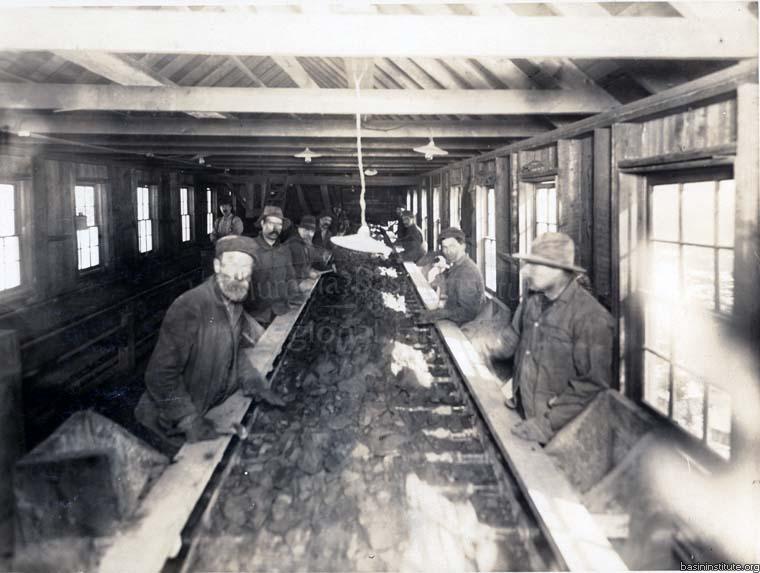Storing and Loading: Rossland’s Golden Ore
The rock extracted from the mines would be sorted into either waste or ore. The waste rock would be tossed into waste dumps out of the way of the work area. If you look up, you can see the old orange-tinged waste dumps from the Rossland mines above the museum property. The mineral-rich ore would be transported down from the mines, usually by aerial tramway, to the ore loading area where it would be taken by rail to a smelter in either Trail or Northport. To streamline this process, underground rail networks snaked through the mines, operating electric locomotives to haul ore and waste to their respective places above ground. By the 1920s, over 85 miles of narrow gauge, electric railway was operating in the Rossland mines, plunging down 22 levels of workings.
The first timetable of the Columbia & Western Railway to come into effect in June of 1896. From the Rossland Miner.
Train Loading Area
The ore car loading area found on the upper bench of the museum is a reminder of the Black Bear Mine that once operated on the property. In the laborious industry of hard-rock mining, extracting ore from the ground was only half of the battle, as the ore must then be taken to a smelter to be processed and refined.
The Railways
The rail lines connecting the Rossland mines to the smelters were hugely beneficial for Rossland not only by supporting the mining boom, but also because they connected the growing city to the rest of the world. In 1896 Fritz Augustus Heinze built the Trail Creek Tramway which connected Rossland and its ore to the smelter he had built in Trail. This railway was purchased by the Canadian Pacific Railway in 1898, connecting Rossland to the company’s expansive cross-country route. It was renamed the Columbia & Western Railway. USA railway entrepreneur Daniel Corbin built a competing railway in 1896 as well - the Red Mountain Railway - which connected Rossland to Washington State. This railway was purchased by the Great Northern Railway in 1898, which ran a very successful passenger service to Northport and Spokane along this route. As the mining boom ended, and highways began to out-compete rail, both companies eventually cut their losses and ended services to Rossland. The Great Northern pulled up its tracks in 1922, and the Canadian Pacific did the same in 1966.
The Red Mountain Railway timetable, from the Rossland Miner newspaper.
Continue the Outdoor Tour:





